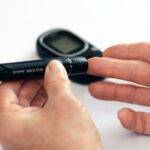In recent years, the field of alternative medicine has witnessed the integration of traditional practices with cutting-edge technology. One such example is electroacupuncture, a technique that combines the time-honored principles of traditional acupuncture with the power of electrical stimulation, offering a dynamic and promising treatment option for a range of health issues.
What is electroacupuncture?
Electroacupuncture is a form of acupuncture in which electrical currents are applied to specific acupuncture points on the body. This technique is based on the principles of traditional Chinese medicine (TCM), which views the body as a network of interconnected pathways through which vital energy, known as Qi, flows. According to TCM, when there is an imbalance or blockage in the flow of Qi, health issues may arise.
In electroacupuncture, thin, sterile needles are inserted into acupuncture points, just like in traditional acupuncture. However, in this method, the needles are connected to a device that delivers a gentle electrical impulse to stimulate the points. The electrical stimulation enhances the effects of acupuncture, promoting better energy flow and influencing the body’s physiological responses.
What does electroacupuncture feel like?
The sensation experienced during electroacupuncture can vary from person to person. Generally, patients may feel a mild tingling, pulsating or warming sensation at the acupuncture points where the electrical stimulation is applied. The intensity of the sensation can be adjusted by the acupuncturist based on the patient’s comfort level and the specific condition being treated. The electrical currents used in electroacupuncture are typically low and should not cause pain or significant discomfort.
How does electroacupuncture work?
The underlying mechanism of electroacupuncture remains an area of ongoing research. However, there are several theories that attempt to explain its efficacy:
- Increased endorphin release: Stimulating acupuncture points may trigger the release of endorphins, the body’s natural painkillers. This can help reduce pain and promote relaxation.
- Improved circulation: The gentle electrical current may boost blood flow to the targeted area, supporting tissue repair and reducing inflammation.
- Nervous system regulation: Electroacupuncture can influence nerve signaling, potentially calming overactive nerves or stimulating sluggish ones, which may be helpful for neurological conditions.
- Neurotransmitter balance: It may also affect levels of serotonin, dopamine and other neurotransmitters involved in mood, sleep and pain regulation.
Applications of electroacupuncture
Electroacupuncture is a versatile treatment method and can be used to address a wide range of health issues, including:
- Musculoskeletal disorders
- Neurological conditions
- Digestive problems
- Respiratory disorders
- Menstrual and reproductive disorders
- Addiction
- Skin conditions
- Emotional imbalances
Precautions and contraindications
While generally safe, electroacupuncture isn’t suitable for everyone. It should be avoided or used with caution in certain cases, including:
- Pregnancy, especially on the abdomen and lower back
- Epilepsy and seizure disorders
- Pacemakers and implantable devices
- Severe heart conditions
Always consult with a qualified acupuncturist or healthcare provider before starting treatment. They’ll assess your health history to ensure electroacupuncture is appropriate for you.
Takeway
Electroacupuncture brings together the wisdom of traditional Chinese medicine and the precision of modern technology. By combining acupuncture with controlled electrical stimulation, this technique offers enhanced therapeutic effects, especially for pain relief, stress management and neurological support.
Whether you’re exploring acupuncture for the first time or looking to deepen your treatment plan, electroacupuncture could be the next step in your healing journey. Contact us today to learn more or schedule an appointment.








